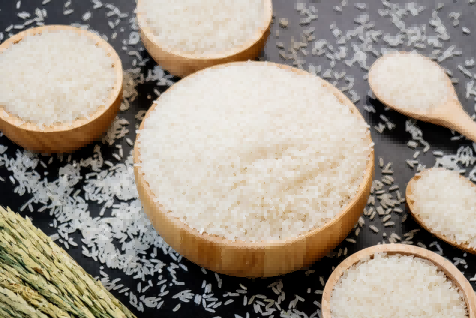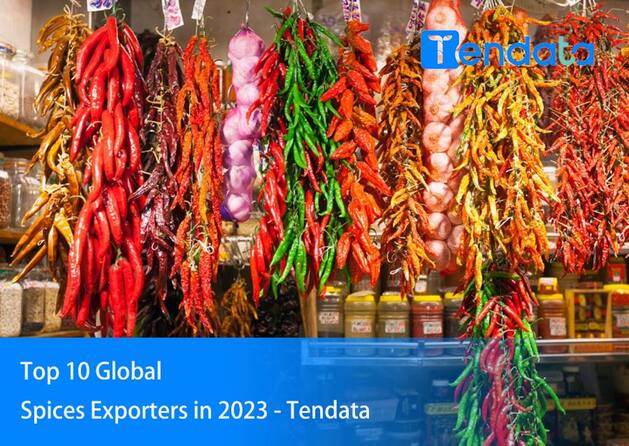 Trade Trends News
Trade Trends News
 21-07-2023
21-07-2023
-India accounts for 40% of global rice exports. Ban will affect about half of exports.
-Rice export organization compares impact of Ukraine war.

India on Thursday ordered a halt to its largest rice export category, a move that will roughly halve exports from the world's biggest grain exporter and spark fears of further inflation in global food markets.
The average or most common price of rice across Indian cities has risen by 5 rupees per kilogram in the past year and was selling at 35 rupees per kilogram on Thursday. In Delhi, the average price was Rs 39 per kilogram as against Rs 32 per kilogram a year ago. The food ministry said domestic rice prices were on an upward trend, rising 11.5 percent year-on-year and 3 percent from a year ago.
The government said it would ban the sale of non-Indian-spiced rice after retail prices of evening rice rose 3 percent in a month, but strong monsoon rains have caused severe damage to crops.
India accounts for more than 40 percent of the world's rice exports and low stocks in other exporting countries mean any reduction in exports could lead to a rise in food prices, which have been pushed up by last year's Russian invasion of Ukraine and unstable weather.
"In order to ensure adequate supply of non-basmati white rice in the Indian market and to curb price rise in the domestic market, the government of India has revised its export policy," the food ministry said in a statement. Retail prices have risen 11.5% in the last 12 months, the statement said.
Last year, India's rice exports totaled 22 million tons, of which the affected non-Basmati and broken rice category accounted for about 10 million tons.
The government clarified on Thursday evening that steamed grain rice, with exports of 7.4 million tons in 2022, is not included in the ban.
The move shows the sensitivity of the Prime Minister Narendra Modi-led government to food inflation ahead of next year's general elections.
His government extended the ban on wheat exports in September 2022 after restricting rice shipments. It has also restricted sugar exports this year due to falling sugarcane production.
BV Krishna Rao, president of the Rice Exporters' Association, told Reuters, "With Russia's incursion, India will disrupt the global rice market at a much faster rate than Ukraine's impact on the wheat market."
Rice is a staple food for more than 3 billion people, and nearly 90 percent of the water-intensive crop is produced in Asia, where El Niño weather patterns typically lead to reduced rainfall. Global prices have hovered at their highest level in 11 years.
"A sudden export ban will be very painful for buyers, who can't substitute goods from any other country," Rao said.
While Thailand and Vietnam don't have enough stocks to make up for the shortage, African buyers will be most affected by India's decision, Rao said, adding that many countries will urge New Delhi to resume shipments. Other major buyers of Indian rice include Benin, Senegal, Ivory Coast, Togo, Guinea, Bangladesh and Nepal.
The ban will come into effect on July 20, but ships under load will be allowed to export.
Weather damage
Heavy rains in northern India over the past few weeks have damaged newly planted crops in states such as Punjab and Haryana, and many farmers have had to replant.
Paddy fields in the northern states have been submerged for more than a week, destroying newly planted seedlings and forcing farmers to wait for the floodwaters to recede before they can replant.
In other major rice-growing states, farmers prepared rice nurseries but were unable to transplant seedlings due to insufficient rainfall.
The area under paddy cultivation was expected to increase after New Delhi raised the purchase price of rice, but so far farmers have planted 6 percent less paddy than they did in 2022.
Prices of export rice from Vietnam, the world's third-largest rice exporter after India and Thailand, surged to the highest level in more than a decade this week as supply concerns mounted due to El Niño.
Vietnamese 5 per cent broken rice was offered at $515-525 per tonne, the highest level since 2011. Offers for India's 5 percent broken pre-cooked varieties hovered near five-year highs at $421-428 a ton.
A European trader said buyers might turn to Thailand and Vietnam, but their prices for 5% broken rice could be $600 per tonne.
Another European dealer said China and the Philippines, which usually buy Vietnamese and Thai rice, would be forced to pay significantly higher prices.
Category
Leave Message for Demo Request or Questions


 T-info
T-info T-discovery
T-discovery

 My
Tendata
My
Tendata Market Analysis
Market Analysis Customer
Development
Customer
Development Competitor
Monitoring
Competitor
Monitoring Customer Relationship
Customer Relationship






































































































































